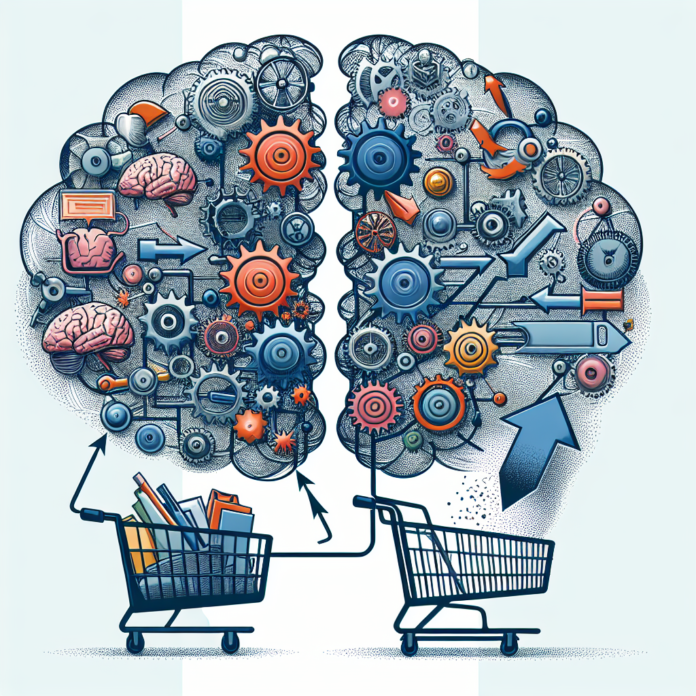[ad_1]
Consumer behavior is an integral part of marketing and business strategies. Understanding what drives consumers to make purchasing decisions can help businesses tailor their products and marketing efforts to better meet the needs and desires of their target audience. This article will explore the psychology behind consumer behavior and the various factors that influence purchasing decisions.
Psychological Factors Influencing Consumer Behavior
There are several psychological factors that influence consumer behavior. One of the most well-known theories is Maslow’s hierarchy of needs, which suggests that people are motivated to fulfill their basic needs before moving on to more complex needs. This theory can be applied to consumer behavior, as individuals are likely to prioritize purchasing products that fulfill their basic needs, such as food, shelter, and safety, before considering products that fulfill higher-level needs, such as self-esteem or self-actualization.
In addition to Maslow’s hierarchy of needs, other psychological factors, such as perception, attitudes, and motivation, also play a significant role in consumer behavior. Perception refers to how individuals interpret and make sense of the world around them, which can influence their purchasing decisions. Attitudes, on the other hand, are a person’s evaluation of an object or idea, which can be shaped by their beliefs and values. Lastly, motivation is the driving force behind consumer behavior, as individuals are often motivated by the desire to fulfill a need, achieve a goal, or satisfy a want.
Social and Cultural Influences on Consumer Behavior
While psychological factors play a crucial role in consumer behavior, social and cultural influences also have a significant impact. Social factors, such as reference groups, family, and social class, can influence an individual’s purchasing decisions. Reference groups are groups of people that individuals compare themselves to, and their behavior and purchasing decisions can influence others. Family, as a primary reference group, can also significantly shape the purchasing decisions of its members. Social class, on the other hand, refers to a person’s position in society, which can influence their purchasing behavior and preferences.
Cultural factors, including culture, subculture, and cultural trends, also influence consumer behavior. Culture refers to the set of values, beliefs, and customs that are shared by a group of people, which can shape their preferences and purchasing decisions. Similarly, subculture refers to a smaller group within a culture that shares distinct values and behaviors. Additionally, cultural trends, such as fashion and lifestyle trends, can also influence consumer behavior and purchasing decisions.
Understanding Consumer Decision-Making Process
The consumer decision-making process consists of several stages, including problem recognition, information search, evaluation of alternatives, purchase decision, and post-purchase evaluation. In the problem recognition stage, consumers recognize a need or want that they want to fulfill, which triggers the decision-making process. They then proceed to search for information about possible solutions, evaluate the available options, make a purchase decision, and finally, evaluate their satisfaction with the purchased product or service.
Understanding the consumer decision-making process can help businesses identify opportunities to influence consumer behavior at each stage. For example, businesses can use marketing strategies to create awareness of their products or services during the problem recognition stage, provide relevant information during the information search stage, and offer incentives to encourage consumers to make a purchase decision.
Conclusion
Consumer behavior is influenced by a complex interplay of psychological, social, and cultural factors. Understanding the motivations behind purchasing decisions can help businesses develop effective marketing strategies and product offerings that resonate with their target audience. By recognizing the various factors that influence consumer behavior, businesses can better meet the needs and desires of their customers, ultimately leading to increased customer satisfaction and loyalty.
FAQs
Q: How can businesses use the psychology of consumer behavior to improve their marketing strategies?
A: Businesses can use the psychology of consumer behavior to better understand their target audience and tailor their marketing efforts to appeal to their motivations and preferences. For example, businesses can use targeted advertising and messaging that aligns with the values and beliefs of their target audience, creating a more personalized and compelling marketing strategy.
Q: How do social and cultural influences impact consumer behavior?
A: Social and cultural influences, such as reference groups, family, social class, culture, and subculture, can significantly shape an individual’s purchasing decisions and preferences. By recognizing and understanding these influences, businesses can better align their products and marketing strategies with the values and behaviors of their target audience.
Q: What is the role of the consumer decision-making process in shaping purchasing behavior?
A: The consumer decision-making process consists of several stages, including problem recognition, information search, evaluation of alternatives, purchase decision, and post-purchase evaluation. Understanding this process can help businesses identify opportunities to influence consumer behavior at each stage, ultimately leading to more effective marketing strategies and improved customer satisfaction.
[ad_2]


